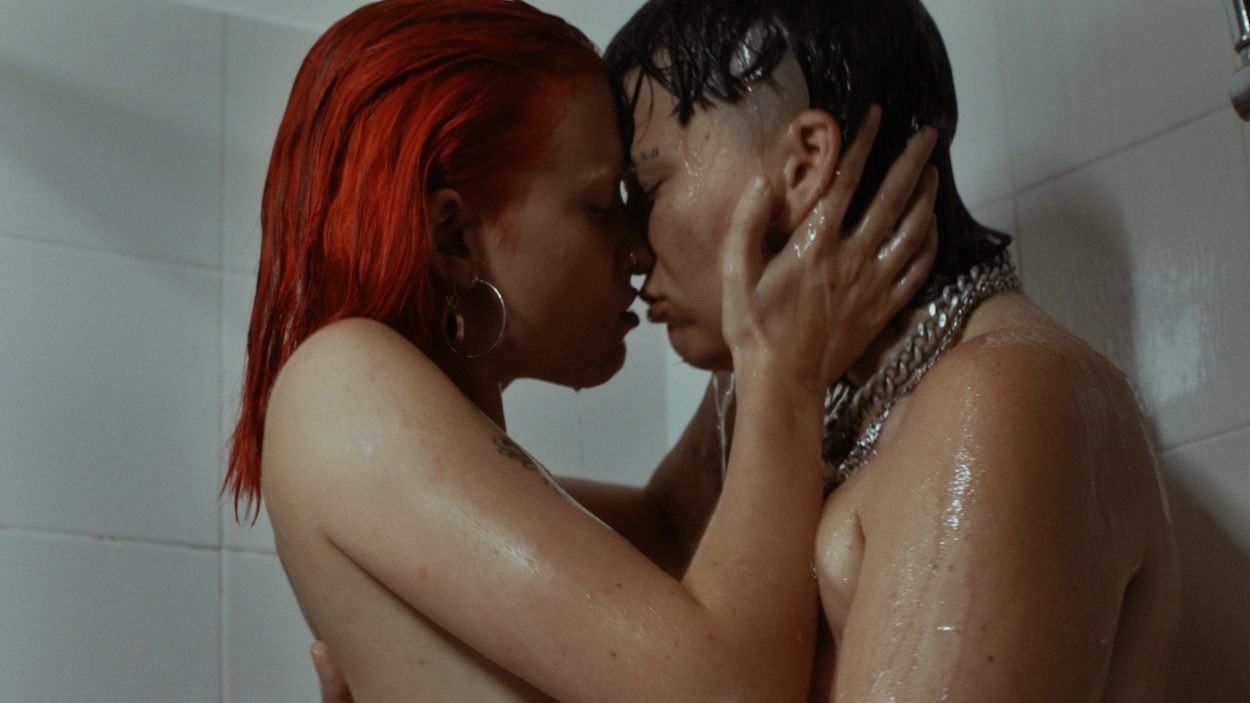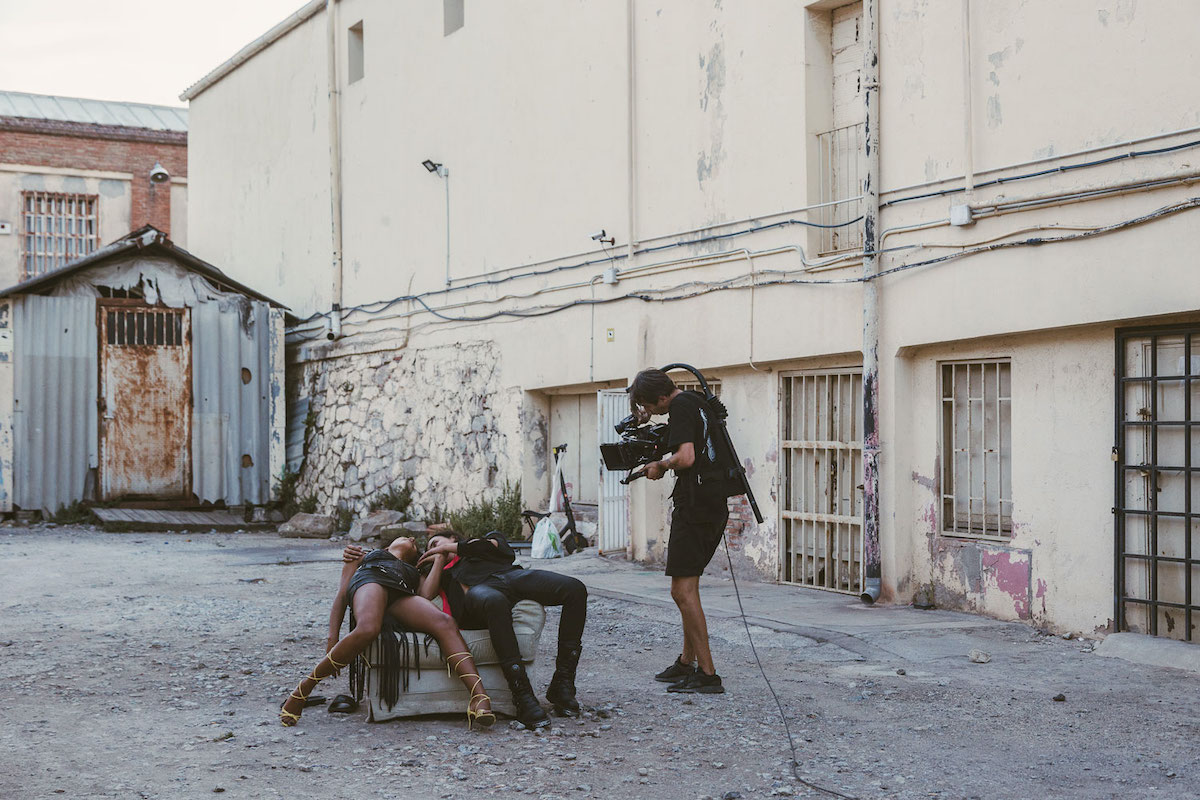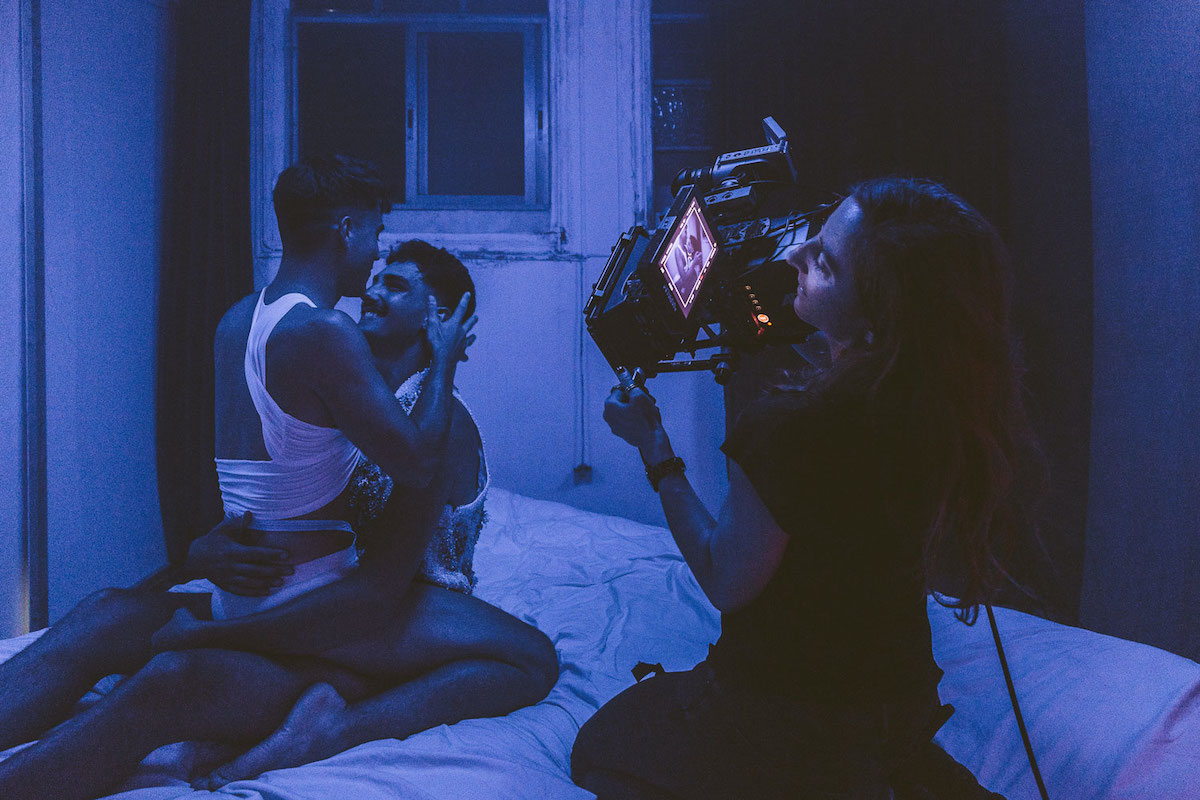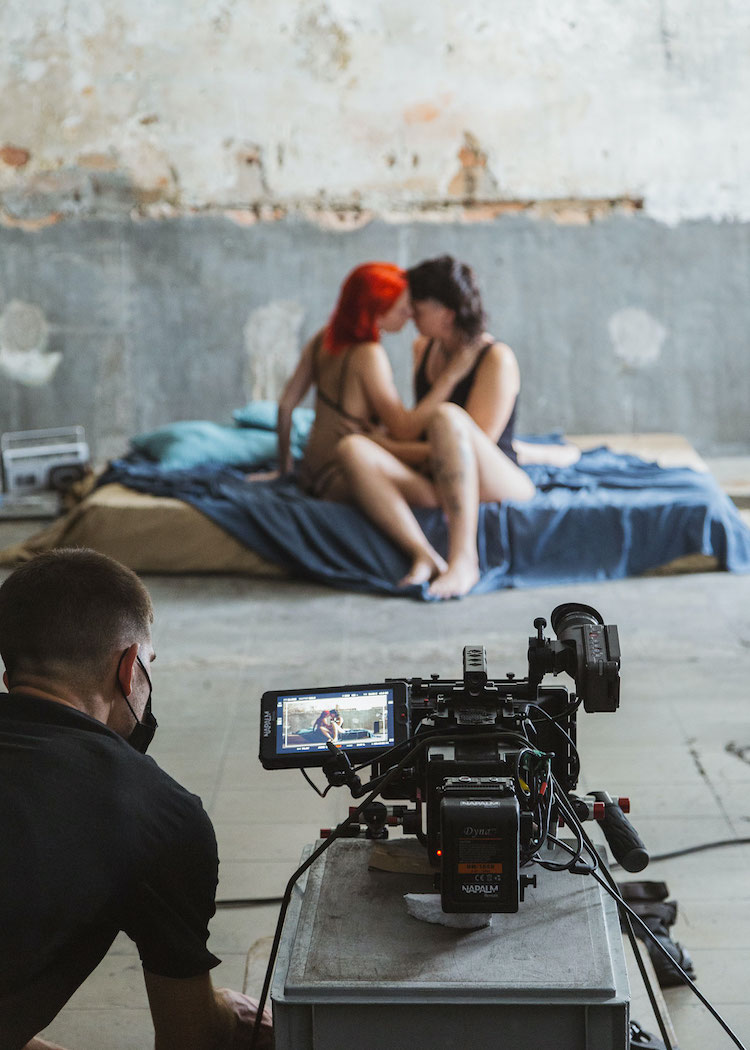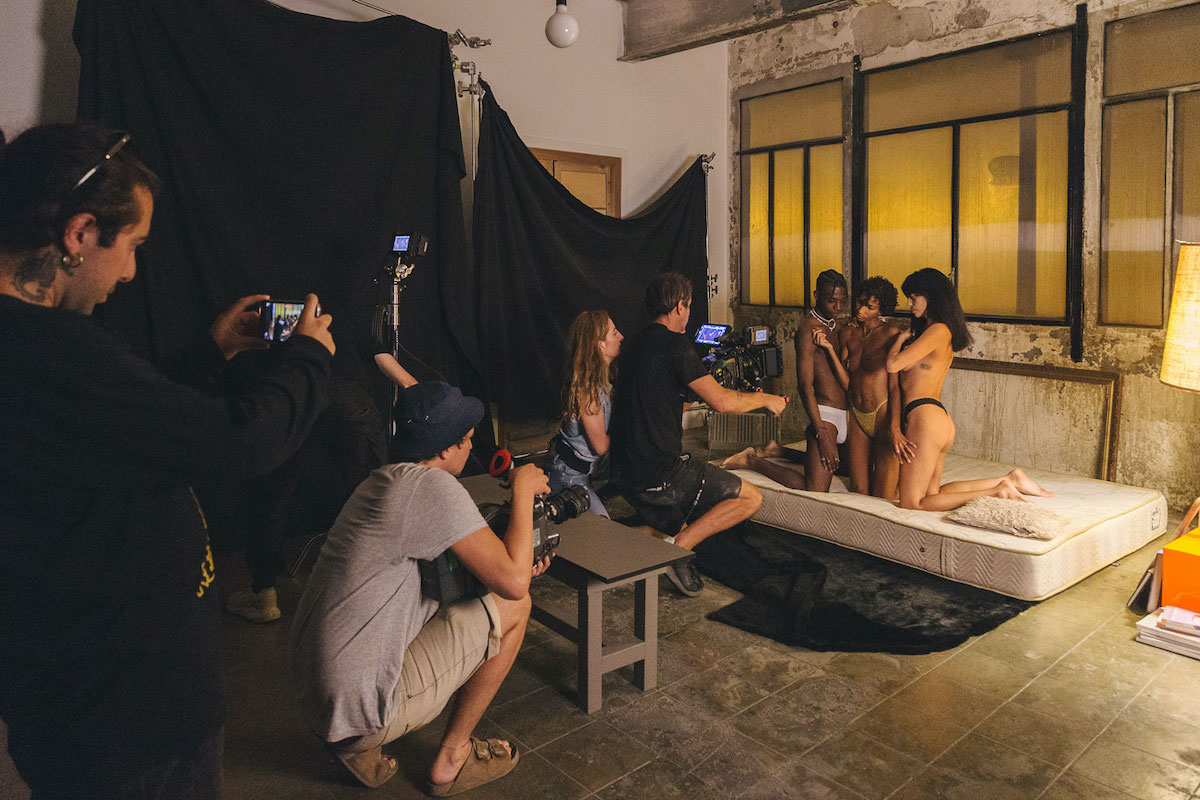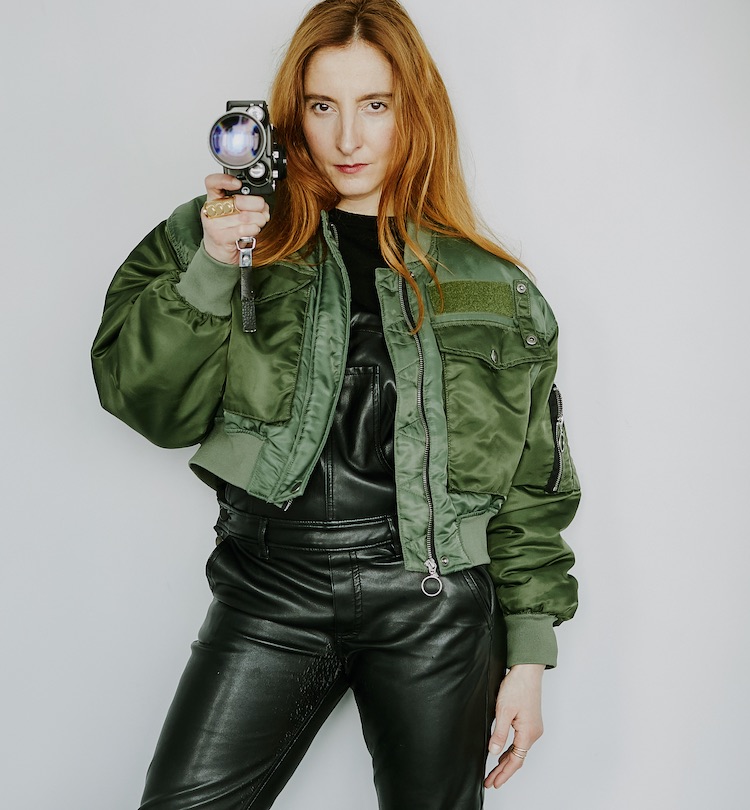Filming Audrey Mascina’s short film I Am That I Am
Your work is deeply physical, tactile and energetic, in which the camera is as much an active participant as your subjects – tell us about your background as a classic and contemporary dancer/musician and how that led you into the world of filmmaking?
I started dancing aged 5 until 17. Dance has been the space where I first developed my imaginary world. It was my privileged environment to explore, meet myself and build a path I felt really belonged to me and no one else. Dance has given me a profound awareness and connection with my body, and developed my mental power. It has given me a true sense of space, rhythm, an emotional and physical sense of performance.
I really wanted to become a dancer, but life took me some place else, and I finally turned into a musician at 25. I had an electro rock band for almost 10 years. I created this band with a huge maestro in the art world, Jérôme Sans. He is the co-founder of Palais de Tokyo in Paris. Our approach to music was thus as musical as it was visual.
I have been staging myself and telling stories through performance, photography, video. At some point, film became a very obvious medium to me. I feel really grateful life gave me this background, this physical, rhythmical and emotional memory to infuse my directing style today.
There’s a very close link between dance and sex, with sex being the ultimate form of physical self-expression – a theme you’ve delved into recently with I Am That I Am, a short film exploring intimacy. What was the creative spark for the project?
As you say, dance and sex are very close… and they are all about body, freedom, emotions, desires, sensations, power, fragility, constraints, exploration, understanding… and how you navigate within and with all that. I feel there is a visceral need for me to explore that and find my way to talk about it and tell stories addressing that world through film. This kind of personal thread is amplified by artistic encounters that have lit up my journey. I’m thinking spontaneously of Patrice Chéreau, Roman Polanski, Larry Clark, Nan Goldin, Wolfgang Tillmans…
Capturing this level of intimacy – not only the realities of bodies, but people’s emotional admissions around their sexuality and the shame that sometimes accompanies that – is quite a feat, how did you go about building trust with your subjects?
Preparing this shoot, I have been amazed how this film has met its cast in a very organic, natural way. People were so excited, happy about this idea to share with others their story as a collective awareness and celebration of freedom. We took the time, to meet, talk and build this space together – the set up felt comfortable and genuine for them to open up on all levels.
Using movement to tell visual stories in fashion has become almost a trope in recent years, how do you keep your approach fresh and original? What are your creative starting points when a commercial brief comes in?
Well, I do love movement indeed, but it’s not necessarily what I am trying to push or go for in every film. I hate this idea of doing “gratuitous” things just because it looks good, it’s cool or people are expecting that from you. I’m more into finding something I feel right and exciting to direct. Something challenging for me, sometimes different than what’s generally done in a certain category or context, that of course meets the client’s expectations and hopefully even more.
What was the first film to make an impact on you, and are there any filmmakers, choreographers or photographers whose work has influenced you?
Well I mentioned a few above, but definitely Intimacy by Patrice Chéreau, Lunes de Fiel by Roman Polanski, Ken Park by Larry Clark, Requiem for a Dream by Darren Aronofsky, The Last Tango by Bertolucci… I have been immersed in the contemporary art world for ten years, so there’s a lot of photography in my memory and engrained in my skin. I have also been the art director for a magazine for three years, and I have done the iconography for different books, including Gay Pride, which I worked on with Oliveiro Toscani. As for choreographers, there are definitely many inspiring ones, but if I should name one, it is Ohad Naharin. I love his journey, his philosophy about dance and movement. How he pushes every dancer to find their own body language and push their limits.
Having dispelled the taboos around sexuality and intimacy in I Am That I Am, are there any other controversial topics you’re keen to explore in future projects?
I’d like to explore this theme of intimacy and sexuality way further more in a documentary feature length format and in fiction film as well. It’s such a wide and versatile space. And I want to dive into fiction and make films that address personal quests and obsessions.
You’ve recently signed to Caviar; what would be your dream brief to work on in the future?
The brief I dream is either very sharp and edgy in terms of aesthetic and creative with an amazing actor or actress, or more narrative and cinematic, like a short fiction. The kind of board where you feel you can land a film that makes an impact and leaves a lasting feeling.
Audrey Mascina
Interview by Selena Schleh
INFO:
Audrey Mascina website
@audreymasina
@caviar.tv
Crack Films website
@crack_eu
